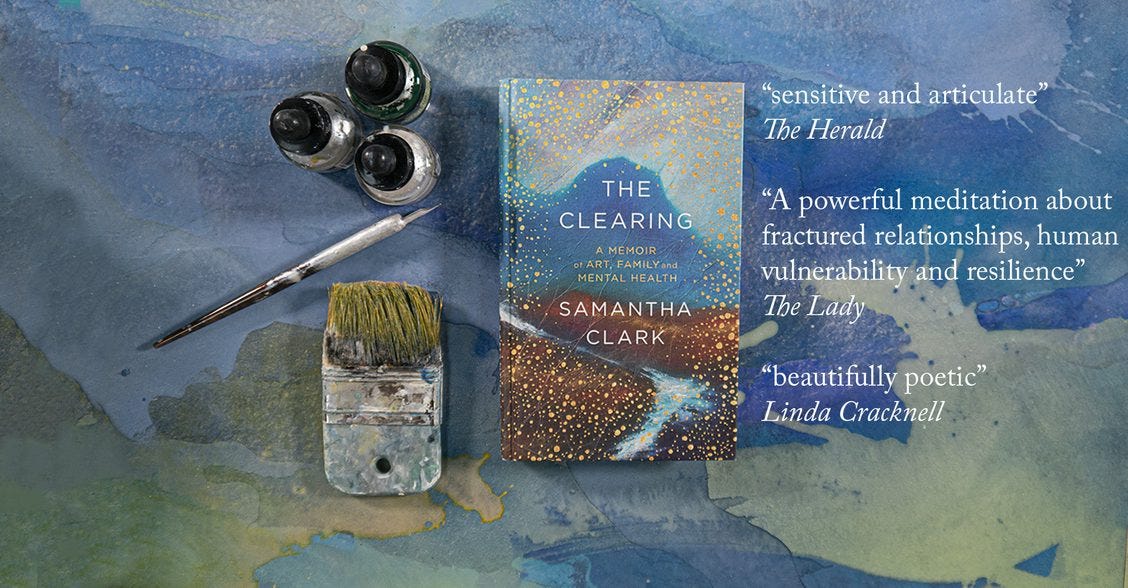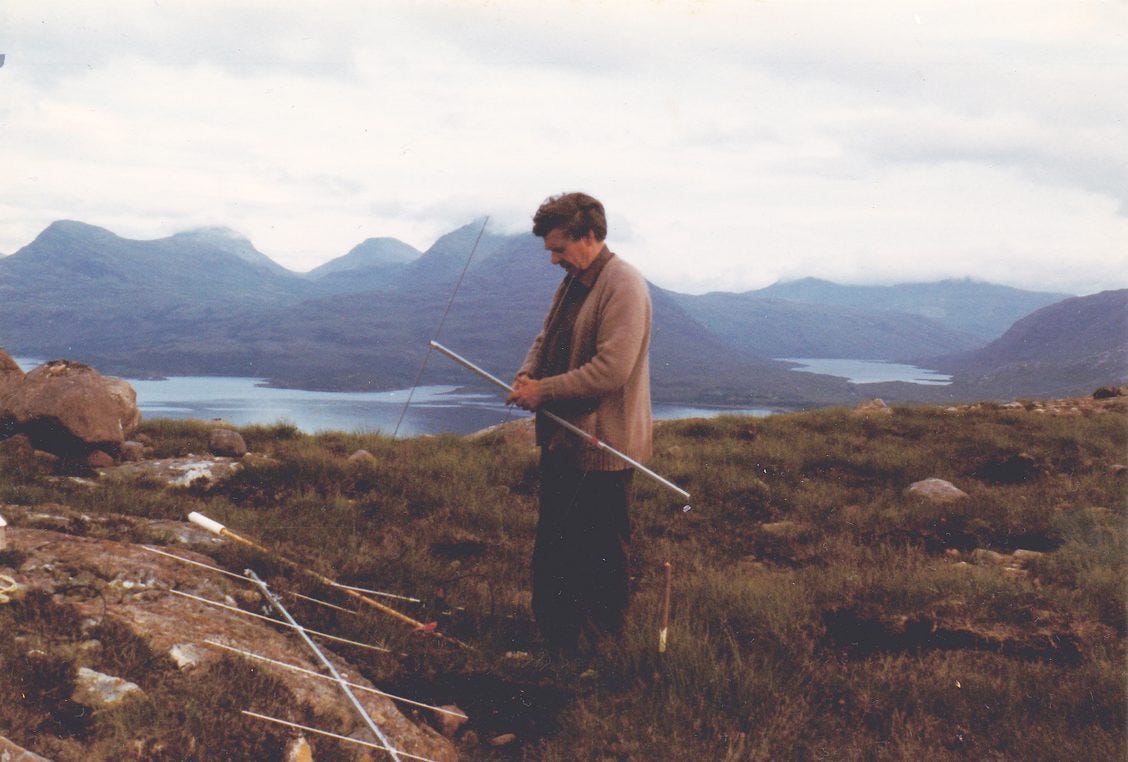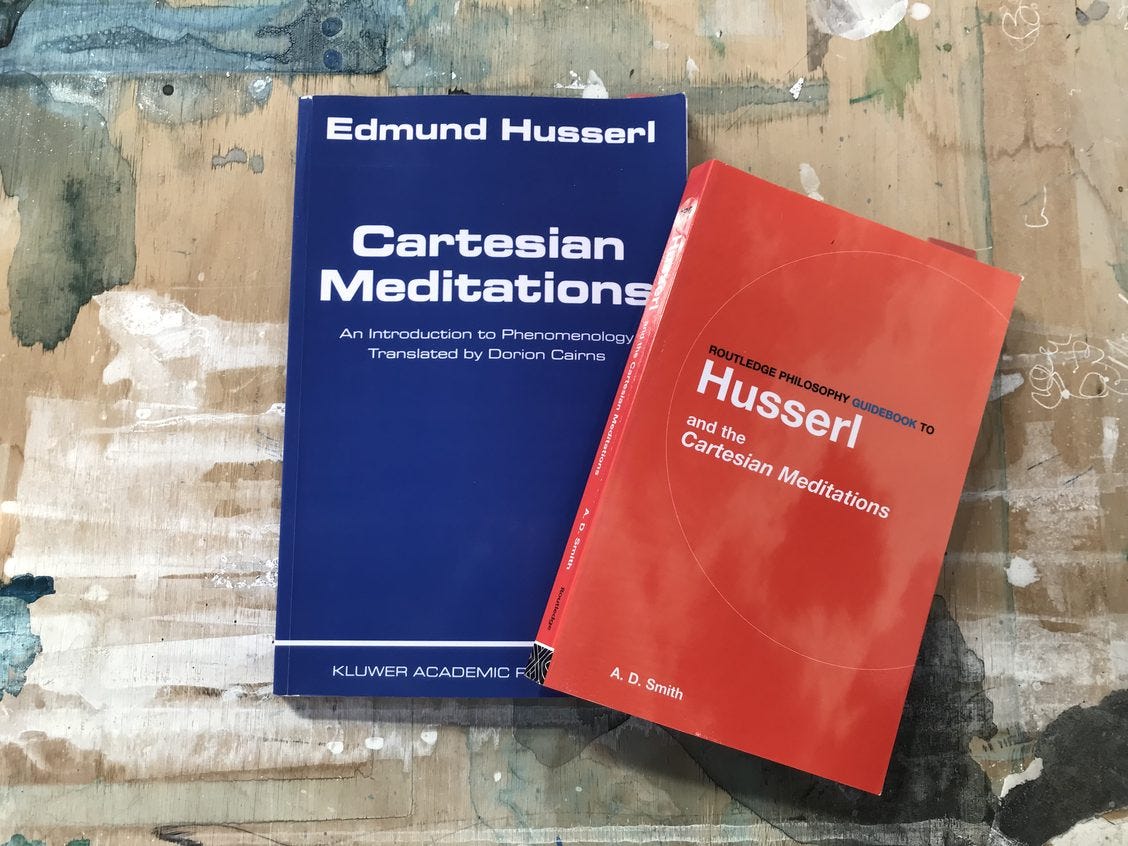I was recently invited to give a keynote presentation at Glasgow University, for the research network DeathWrites. Co-ordinated by Dr Amy Shea, Dr Elizabeth Reeder, and Dr Naomi Richards, the project aims to develop and support a network of Scotland-based writers from across disciplines and genres to write and publish powerful, accessible work that will broaden and diversify understandings and conversations about death, dying and grief.
I was invited to speak on the theme of the first workshop ‘Objects as Catalyst to Recording and Gathering’. A few people have been in touch to ask me about it, so I’m sharing the talk I gave over the next two emails. I draw from my own experience of writing my own book The Clearing, leavened with a bracing dose of phenomenology.
So strap in, here comes part one!
Objects as “Gatherings that Record” for DeathWrites, Glasgow University ArtsLab
The Clearing is, on one level, an account of clearing out my parent’s home after they had both died. My parents had become hoarders as their physical and mental health failed and the house had become very dilapidated. Every room was stuffed with objects. It took us three years to clear them all.
But the book is also about a ‘clearing’, a space or opening, a space between things. It’s a book about gaps, silences, absences, empty spaces and what might fill them. The leitmotif of the ‘subtle ether’ runs through the whole book. The idea of an ‘ether’ was posited by natural philosophers as an ineffable substance that filled the spaces between see-able things. It was what allowed the light from distant stars to reach us here on Earth.
However, although something ineffable inhabits the heart of this book, structurally, each chapter begins with something very tangible; the house, or an object within it, and then travels out from there to explore the space between and around them.
‘Because’, as I explain at the end of the first chapter, ‘the thing about nothing is this: to see it, you have to start with looking at things, and then look just off to the side of them’.
I’ll use some examples from my own writing to explore how the object is perhaps not so much a ‘catalyst to recording and gathering’, as a gathering point itself, a gathering that records. And I begin with an object whose function is to gather up something intangible; one of my father’s home-made antennae.
Here’s an excerpt from the book, about the first time I went into my father’s workroom after his death:
“Softly, I push, and go in. The chilled air smells of rubber cement and 3-in-1 oil. I tread carefully, sliding over magazines, envelopes and discarded shoes. Nearest the door lie bits of old tents, coils of rope, canoe paddles, oilskins, a canvas rucksack now stiff with mildew. Next to it, propped against the wall, are several cumbersome and mysterious structures of copper pipe, wire and dowelling, over six feet long and half as broad.
The objects propped by the door, constructed from copper pipe, broomsticks and spirals of thick copper wire are, I now realise, home-made antennae. These ramshackle assemblages are, it seems, capable of picking up radio signals from the other side of the world, if conditions are right. With these antennae my father listened to the ether, for messages it might bring him.”
Holiday snap taken circa 1981, of my father assembling a Yagi 2m radio antenna on a hillside above Loch Torridon
“The slender aerial he built and photographed here looks such a fragile and precarious instrument, blurring into the sky behind, its fine tips lost in the grain of the picture. The pole, wedged into the thin, peaty soil, is already starting to tip, perhaps catching the wind that so often scours those hillsides, and the whole apparatus points slightly skyward, slanted towards a clouded sky in a land worn to the bone.
This ramshackle instrument, assembled by my father from aluminium tubes, copper wire and coaxial cable, lugs and gaskets, glue and solder, nuts and bolts, could do a marvellous thing. It could access something no human sense could reach, open up a part of the natural world that otherwise we would never come to know. Like a dowsing rod tuned not to underground water but to the subtle energies of the sky, my father’s antenna could see invisible light. An antenna collects light just as our eyes do, but at wider frequencies, and the radio receiver, or transponder, turns this stream of light into sounds we can hear.”
Holiday snap circa 1981, the completed antenna
The object we are talking about here is an antenna, an object built to listen, to draw something that we can’t reach with our senses (electromagnetic signals) and make them audible. These antennae are home-made objects, ‘ramshackle assemblages’ of other objects, some of which are simple and domestic, others more technological, brought together into a whole that becomes more than the sum of its parts. Together, they become not just an object but a ‘tool’.
Now, we are about to go exploring into philosophical territory that may be unfamiliar to you. I’d like to invite you to take hold of an object you have near you right now, that you might want to bring with you. It might be a water bottle, a smartphone, a pen, a notebook, a cup of coffee, something you can hold in your hand.
And, as we set off, I’d like to invite you to consider, for a moment, how this object has come into being, how it has been designed, made, distributed, exchanged, used, how many human hands and minds and plans and thoughts and bodies have been involved in its journey to your hand, and how many materials within it were, somewhere, either dug up from the earth or grown in it.
For a moment or two, bring to your awareness how the object in your hand extends outwards in space to connect you to possibly hundreds if not thousands of other beings and connects this place to others across the globe, and also how it extends backwards and forwards in time, from the fossil fuels used in its making and transportation to the recycling, landfill or compost it will move on to next.
Keep a hold of this object, this ‘thing’. Because we begin by looking at it, and then look just off to the side of it, to see what might be learned there.
The philosopher Edmund Husserl draws attention to the way in which our sensory experience of objects is shot through with absences, memories, longings, stories, the underneath, the inside, the forgotten. According to Husserl’s account, an object has what he calls an ‘inner horizon’ which comprises all these ‘absent’ aspects, while its ‘outer horizon’ are all those connections which are not parts or aspects of the object itself, but are implicated in any consciousness of it. You can think of these as being like the ‘ground’ out of which the ‘figure’ of the object is lifted by our attention.
Husserl’s approach to understanding the object originates in speech. In speech, and by extension, writing, we can understand what is referred to without its being physically present. Cup. Chair. Shoe. Antelope. This process is, Husserl argues, central to how we can be mentally directed to any object at all.
No physical object, even the one you hold in your hand, is completely given to our senses. Any three-dimensional object withholds its interior and its rear side from view, and yet these also form part of our perception of the object without us literally having to ‘imagine’ them. Previous experiences of the same or similar objects also come into play.
Our perception of any given object is a synthesis of a sequence of multiple ‘manners of appearing’, of which all but one, the present one, are absent at any given moment (Husserl, 1999, 77–78). The material object appears as a single ‘pole of identity’ within a flow of conscious processes, and it must also transcend that flow somehow, like a standing wave in fast-flowing stream, because it is always more than meets the eye in any single instant (70).
‘Consciousness of’ any object, even when it is directly present to our senses, essentially involves absence.
Husserl’s meticulously careful analysis of perception shows us that when we are perceiving an external ‘thing’, “the physical thing itself: it itself is there. But, in being there itself, the physical thing has for the experiencer an open, infinite, indeterminately general horizon, comprising what is itself not strictly perceived” (Husserl 1999, 24).
In Husserl’s account, any object that is present to our perception appears to us as an object by virtue of what is not present. Objects are not ‘here and now’ in any simple sense of enclosedness that only operates at one (human) scale, but exist in a delicate interplay of presence and absence, otherness and significance, which is porous, open and potentially vast.
The humble object in your hand is nothing other than a node in a vast web of connections, ideas, memories, places, people.
We’ll come back to this again next week, to think about how the objects left behind by those we love can be rewoven into new stories, places and people, and how that helps us heal.
In between times I invite you to pause from to time time, and just consider how some object you are using is connected in a web of meanings, memories, uses, other things and other times.
I’d love to hear your thoughts on any of this!
Sam
References:
Husserl, E. 1999. Cartesian Meditations: An Introduction to Phenomenology. Dordrecht: Kluwer Academic Publications.
Smith A.D. 2003. Routledge Philosophy Guidebook to Husserl and the Cartesian Meditations. Oxford: Routledge









